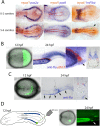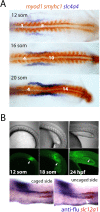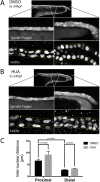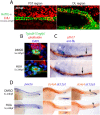Caudal migration and proliferation of renal progenitors regulates early nephron segment size in zebrafish
- PMID: 27759103
- PMCID: PMC5069491
- DOI: 10.1038/srep35647
Caudal migration and proliferation of renal progenitors regulates early nephron segment size in zebrafish
Abstract
The nephron is the functional unit of the kidney and is divided into distinct proximal and distal segments. The factors determining nephron segment size are not fully understood. In zebrafish, the embryonic kidney has long been thought to differentiate in situ into two proximal tubule segments and two distal tubule segments (distal early; DE, and distal late; DL) with little involvement of cell movement. Here, we overturn this notion by performing lineage-labelling experiments that reveal extensive caudal movement of the proximal and DE segments and a concomitant compaction of the DL segment as it fuses with the cloaca. Laser-mediated severing of the tubule, such that the DE and DL are disconnected or that the DL and cloaca do not fuse, results in a reduction in tubule cell proliferation and significantly shortens the DE segment while the caudal movement of the DL is unaffected. These results suggest that the DL mechanically pulls the more proximal segments, thereby driving both their caudal extension and their proliferation. Together, these data provide new insights into early nephron morphogenesis and demonstrate the importance of cell movement and proliferation in determining initial nephron segment size.
Figures







References
-
- Drummond I. A. et al.. Early development of the zebrafish pronephros and analysis of mutations affecting pronephric function. Development (Cambridge, England) 125, 4655–4667 (1998). - PubMed
-
- Majumdar A., Lun K., Brand M. & Drummond I. A. Zebrafish no isthmus reveals a role for pax2.1 in tubule differentiation and patterning events in the pronephric primordia. Development (Cambridge, England) 127, 2089–2098 (2000). - PubMed
Publication types
MeSH terms
LinkOut - more resources
Full Text Sources
Other Literature Sources
Medical
Molecular Biology Databases

